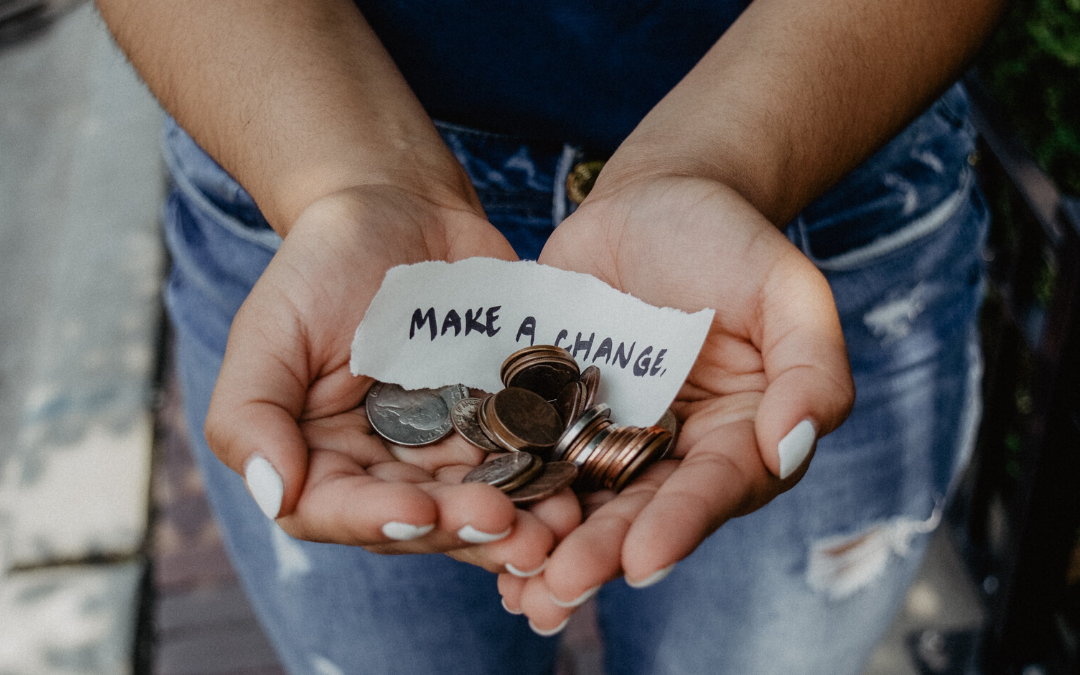Micro donations (contributions between $0.25 to $25) can be a viable revenue model. Ask Macy’s and Domino’s Pizza. In 2017, Macy’s clocked in $5.9 million, and in 2018, Domino’s raised $1.5 million through their “round-up” efforts. The figures are undoubtedly impressive.
Yet, many nonprofits are unable to make micro-donation charity programs sustainable and consistent.
The primary reason for this struggle is that small donations usually come from impulse donors. Converting them into repeat donors might be a challenge. If you have limited resources at your disposal, it may seem like a bad idea to target them towards micro-donors. You may even be contemplating shifting your revenue model to focus heavily on major donations. After all, if a major donor can give you $100 in one go, you will need a series of micro-donors to get to the same amount.
However, by weaving an impulse donation into a more sustainable model, you can ensure small yet consistent support of your donors. Especially during a time of crisis, such sustainable small contributions will come in handy and act as a safety net.
How do small donations make a difference?


A 2017 report by NonProfits Source showed that high net worth donors gave $25,509 to charity in 2015. On the other hand, the typical household gave $2520 on average. High net worth donors gave nearly ten times more than the general population.
However, small donations are easier to secure.
Furthermore, there’s a positive trend of small donors who contribute to causes. Micro donors worldwide tend to give between $100-$1000 in charity every year. It goes without saying that the general public is more significant in number than the big fishes. To ignore or underestimate the power of these numbers would be a grave undoing for nonprofits. Especially in calamities like the COVID-19, when big donors may retract their gifts.
What stands between you and your first-time small donor is the high attrition rate many nonprofits face. About 55% of donors donate to a charity only once. This means, less than half the donors returned to give to a charity.
To secure your funding through micro-donations, you need to increase your donor retention rate.
So, how do we encourage your donors to keep donating? Here’s how you can have a sustainable revenue model:
1. Get them to subscribe for micro-donations:
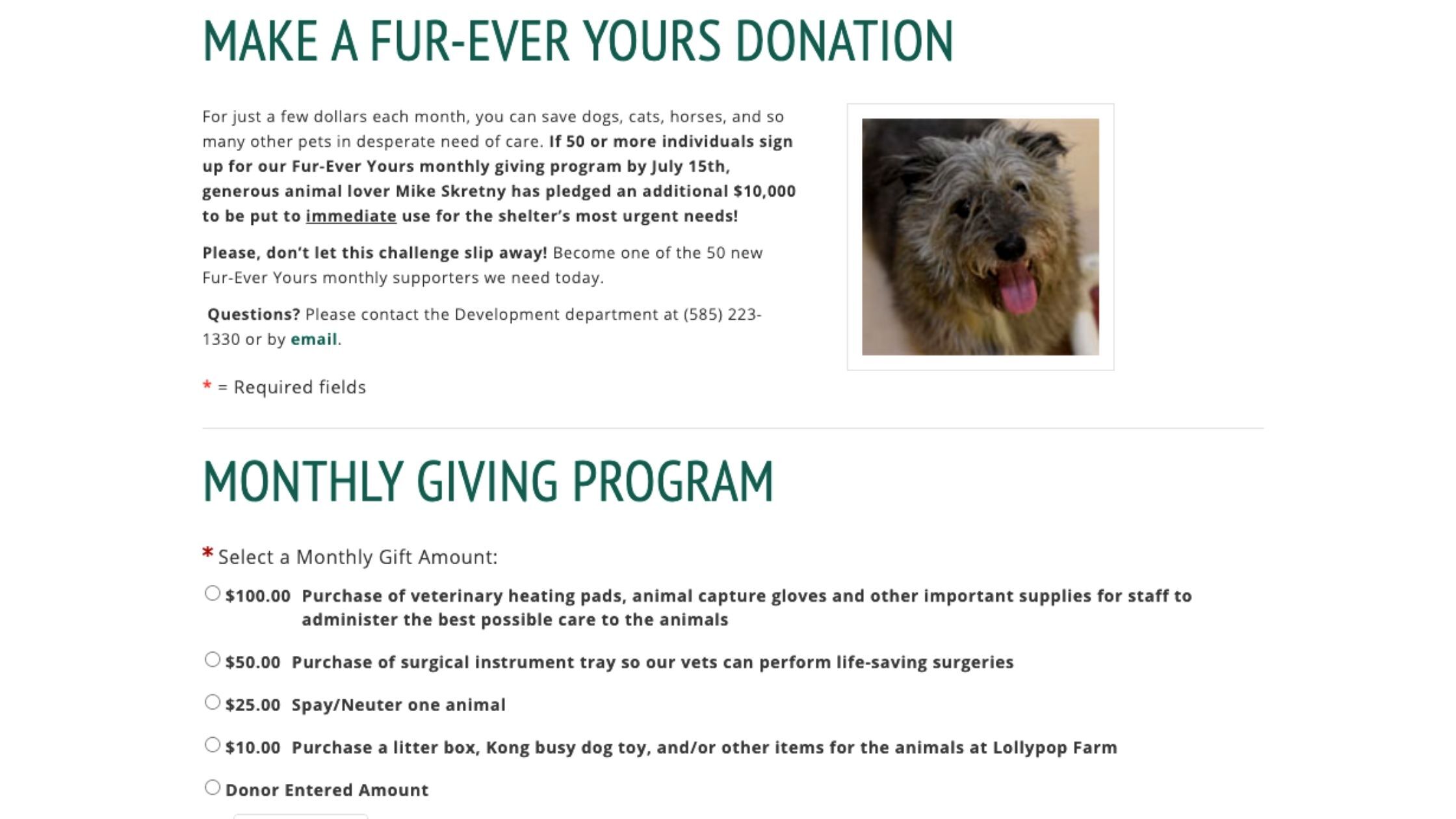

We live in an era of subscription. This model can also work for nonprofits if you keep the subscription rate affordable but consistent. Say, $10 every month. Following are some actionable ideas for a subscription model:
- Team up with a micro donations app that makes micro philanthropy as regular as purchasing essentials. For every food item, personal care products, or other purchases made, a small part goes to your nonprofit. RoundUp is an app that tracks a user’s card payment activity and directs the “change” to charities. Say a user ordered food worth $5.25, the 0.25 change goes to your organization. This way, the app collects between $15-20 from every user every month!
- You can also get in touch with your supporters to micro-donate to you directly. They subscribe to your cause to get weekly or monthly updates. Lollypop Farms, an animal welfare nonprofit, makes monthly giving super easy. For $10/month, it gets toys for the animals in their care. For $25, it gets one animal neutered. The higher you go in the payment, the more significant your impact!
- A subscription model can also work if you provide branded products to your donors. Choose merchandise that has recurring value- like stationary so your donors will get value out of their gifts. For instance, for $10/month, donors get a full set of writing stationery. For $25, they get handmade bath products.
Related Reading: Tips on how to launch a successful monthly giving program
2. Millennials and Gen-Z as targeted donors:
By the end of 2020, millennials will be the largest demographic in the American workforce. And they donate enthusiastically. A Forbes survey revealed that in 2014, 84% of millennial employees donated to a cause they believe in. Sure, the collective amount they donated is less than what boomers and GenXers gave. But this is exactly why millennials are an excellent target for micro-donation programs.
- Target colleges, universities, and internship programs where applicants or students can subscribe to your cause. Here’s a quick guide on how to approach educational institutions for a partnership.
- These younger generations want to contribute to the “greater good” by helping marginalized communities. The stress is on “greater good” and “helping” so frame your message in a way that highlights the impact they will create with their small donations. Go for a ladder of engagement approach with them.
- People from these generations are great with phones. Use that to your advantage by featuring your causes in games, apps, and online advertisements. Here’s your guide on how to get your ads to show up in mobile apps. Apple, Google, and Amazon are also incorporating donations in their apps. Affiliations with them can boost in-app micro donation charities for you!
Related Reading: Structure Your Campaign To Win Over Millennials
3. Be a part of a micro-donation platform:
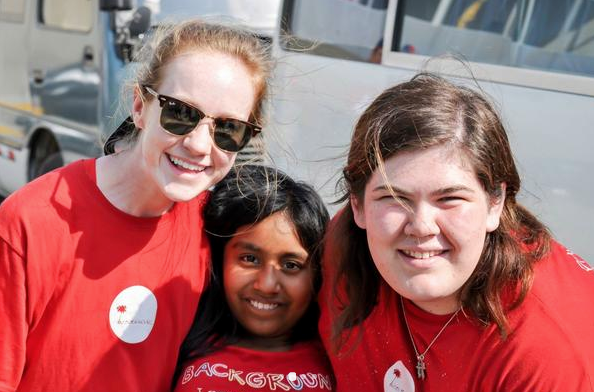

Fundly has raised $330 million; Razoo has raised $400 million and GoFundMe $3 billion. Such micro-donation platforms can help you reach the right audience and optimize your campaigns. Micro donation apps such as GiveLively, Prizeo, RoundUp App, etc. take zero to minimal fees for charities to sign up. Once you are on board, they help you reach hundreds and thousands of patrons easily.
Such fundraising apps will keep your small donations sustainable, increasing, or maintaining donor retention rates. They are likely to have a more extensive reach and already understand who is willing to donate and for what cause. By teaming up with donation apps, you give your organization better visibility and harness their established networks to fundraise with micro-donations.
Read Next: 6 Ways to capture and retain young donors for Nonprofits
Microloans as a way to make donations sustainable
If you are a nonprofit or advocacy group that is helping marginalized communities set up a business or helping the underprivileged with employment, microloans can be a viable option. Individuals can lend as little as $25 for a cause. The only difference is that patrons expect some returns from microloans as opposed to a donation.
Convey to your supporters that they will start with lending a small donation to individuals or groups looking to better their financial situation. You can put in place an ‘adoption’ model where a small group of donors funds one cause. Each individual gives microloans every month and together, they can sustain a short-term cause.
Say, someone who has lost their livelihood in a natural calamity wants to restart their cafe. Donors will be lending the money to you to help the person. Once the business becomes profitable again, the individual will pay a part or all of the loan to the donor.
In the long run, you can give the donors to reinvest this loan into another business. Or if the same business is looking to expand, ask for another small loan for the same.
With an impact so real and relatable, donors will be happy to be micro venture capitalists!
4. Fundraising with micro-donations with the help of family and friends.
The oldest Gen Zer would only be 23 years old in 2020, making the demographic too young to have financial stability. But, as a generation with the most exposure to the world, this generation cares about causes. They care about climate change, socio-political issues, rising poverty, and other pertaining issues.
If they cannot donate due to financial constraints, offer them this ‘relational fundraising’ model.
Reach where they already are (hint: the latest popular social media, schools, and colleges) and show them that they can make a difference even if they don’t have a fortune at their disposal. Relational organizing for funds- asking your target audience to crowdfund from their relatives, friends, and neighbors for a cause- can be a great donation campaign for people who care but cannot financially contribute.
This is something I participated in school. Once a year, a nonprofit would visit us, giving a presentation of their work. They would hand out checklists for students interested in raising funds for them. If you agree to raise funds, the minimum donation per student was set to $25. Now, in a week, the students had to speak with friends, family, and neighbors and collect that amount. The name and amount would go in the checklist, signed by the donor. This way, the nonprofits could raise huge amounts of money for charity within a short time and by using micro-donations.
Related Reading: How To Improve Your School Fundraising Efforts
Of course, you need not limit this method to Gen-Z. In fact, every donor can start a relational fundraising campaign for you. For that, try the ladder of engagement approach.
5. Use the Ladder of Engagement model to encourage larger action
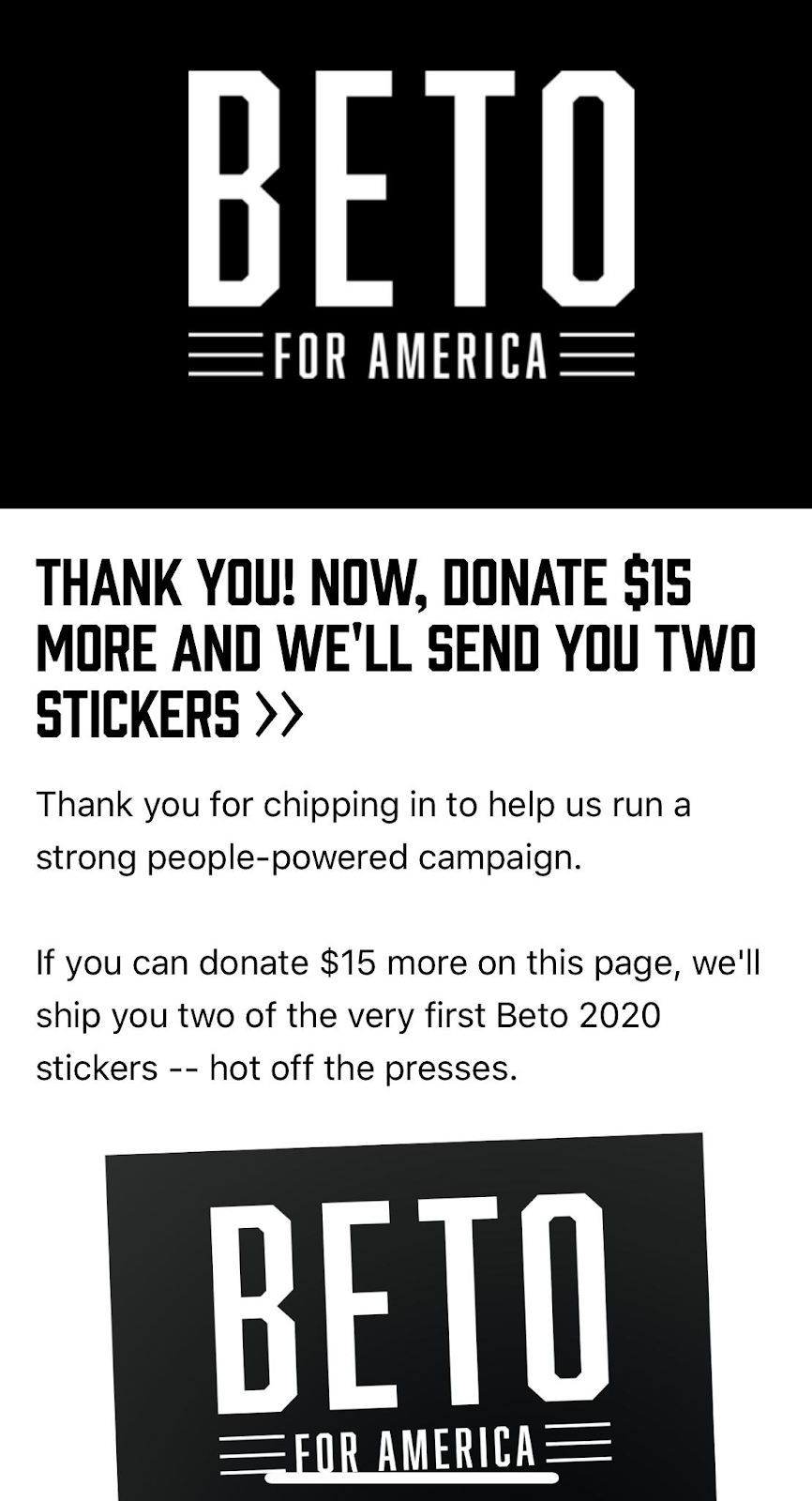

In 2018, Beto O’Rourke started gathering the attention of voters in his constituency by live streaming on social media whenever he jogged, ran errands, or played with his son. The mundane everyday activities were utilized as a platform to raise various issues as O’Rourke spoke about them in the videos.
The smooth and relatable approach of speaking to viewers had them hooked. Curiosity turned to support for many, and they opened O’Rourke’s website to sign up.
This is where his campaign implemented the ‘ladder of engagement’ model. If you signed up, the website would ask you to sign a petition. If you did that, the website would ask for a small-donor fundraising appeal. If you contributed, they would then ask if you’d be happy to reach out to other supporters via door-to-door or phone call campaigns. He was essentially asking supporters to take actions that are only slightly more difficult than the previous one.
About 141,000 contributions were made in total, filling his fundraising thermometer to $6.7 million!
While undertaking the ladder of an engagement model
- Make sure your appeals are personalized
- Always disclose the impact each step will have
- Give the option to subscribe/ opt for repeat donations, so you have a higher chance of retaining donors
Make the donation messages relatable:
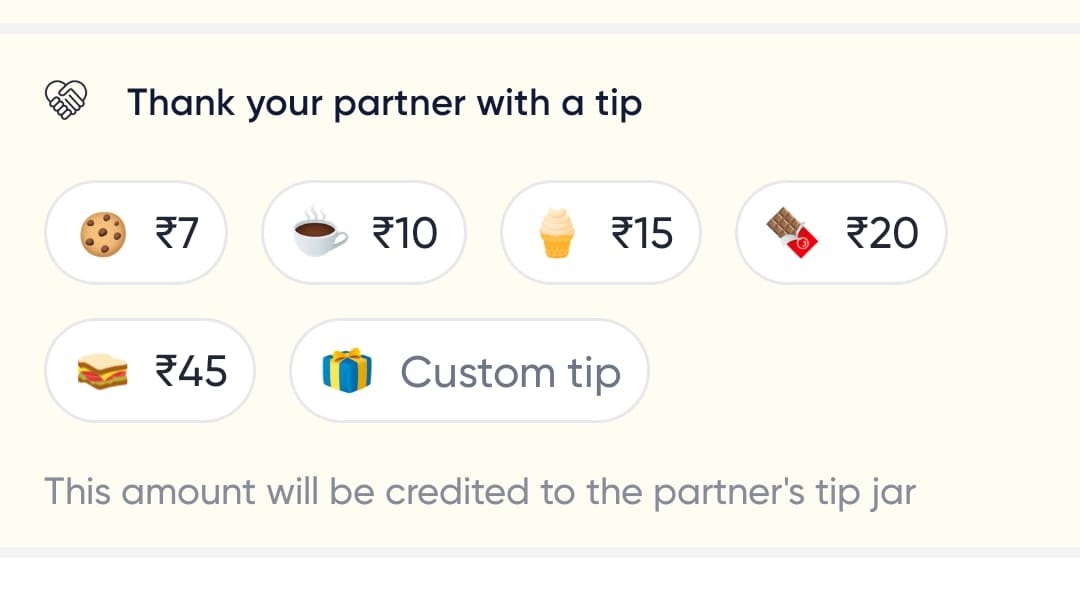

Convey to your donors that they are just buying you one cup of coffee a month. Or that if they spare the price of one take-away meal, they can feed an entire family for a month. Or that for the price of a book, you are securing someone’s education for a year!
When you show that their tiny contributions are making a huge difference, it encourages donors to gift to your cause. From the above example, ₹ 45 seems like an amount too small to make an impact. But tipping the partner with a sandwich means their meal is sorted.
You can utilize this strategy to make the narrative of small donations more relatable, realistic, and tangible.
Related Reading: Text message statistics you need to strategize customer interactions
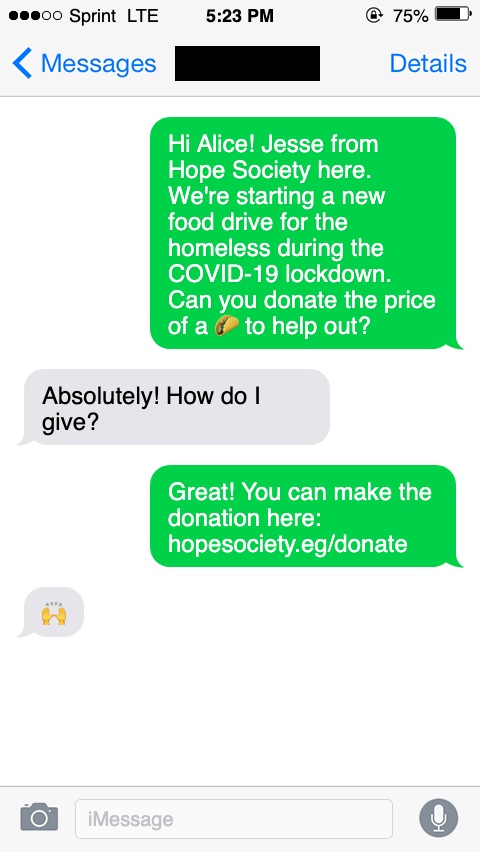

A simple text appeal with a relatable, tangible appeal can yield immediate results. If you are running a texting campaign, consider using a simple language where the request is framed in the context of a definite value-add.
6. Use the goal proximity effect to attract donors
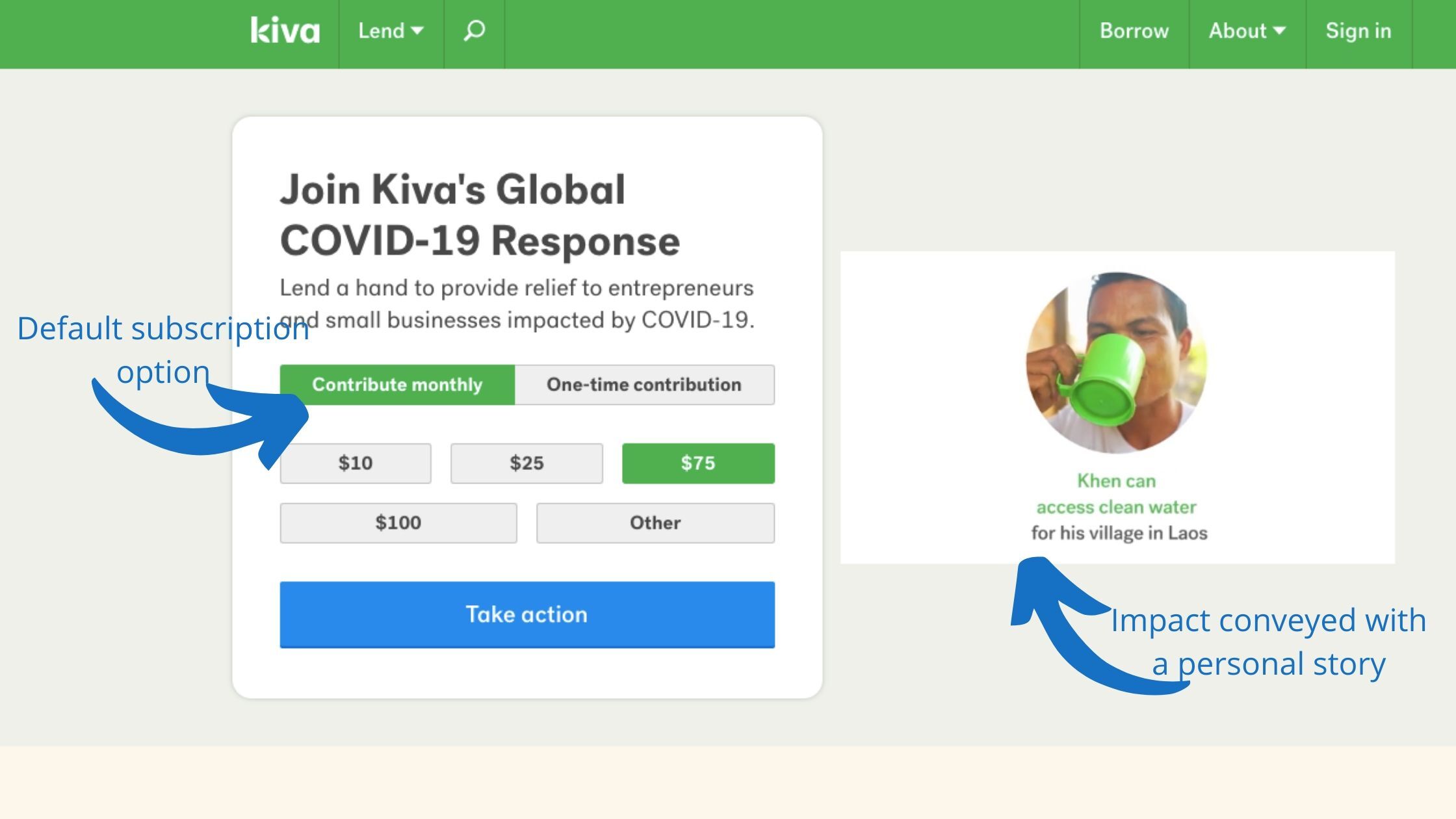

Everyone wants to be a winner. We cheered for the hare in his race with the tortoise until it took a nap. And then we vouched for the tortoise. (No? Just me? But you get the point.) We all want to be part of the winning team.
The same applies to donors. People are more likely to donate towards the end of a campaign than the beginning. This is the Goal Proximity Effect.
So what can you do to bring this effect into play?
- First, divide your long term goal into several short goals. These short goals must have deadlines
- Get your current donors, staffers to pitch in some donations
- When the bucket is not empty anymore, ask first time donors or micro donors for contributions
- It will help you to bring in a matter of urgency. Convey the deadline (and reason behind the timeline) to donors
- Donors who contributed towards the attainment of the first goal are likely to donate for the next.
7. Harnessing the web for micro-donations:
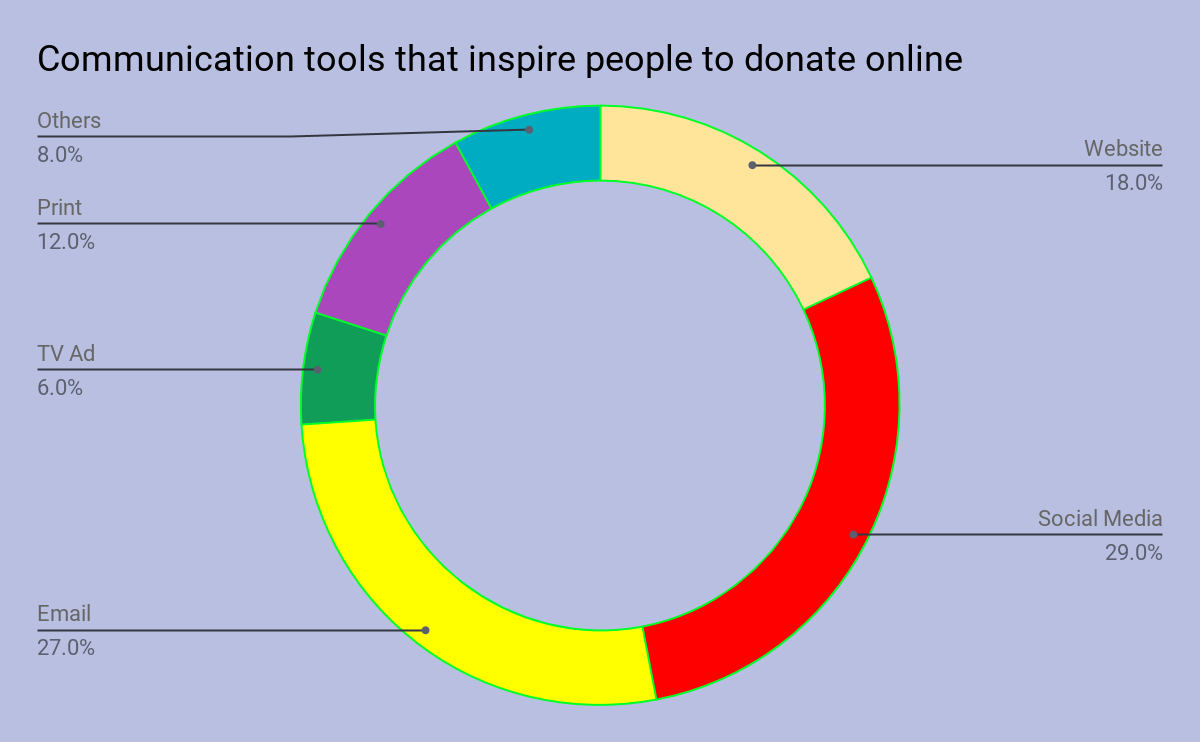

Online donations are on the rise, and in 2019, the total number of online donors increased by 12%. Furthermore, about 25% of first time online donors are retained. Encouraging as these numbers are, one needs a solid strategy to attract new small donors and retain existing ones. For tips on how to chalk out an excellent donor retention strategy, read here.
1. Weaving micro philanthropy during online events:


Our meetings and events are all going online now. That means you have the opportunity to rope in a larger crowd to your events and get them to donate to your cause. Online giving trends, too, are encouraging.
One time online giving has increased by 19% since 2018, and monthly online giving has increased by 40%. So investing in online campaigns or appeals is likely to fetch significant results.
Social media platforms, websites, and apps are optimizing to be more charitable. Take YouTube, for example.
YouTube’s Super Chat is a great way to raise funds with micro donations in a single event. Your supporters pay to get their comments pinned. Instagram’s ‘Live Donations’ feature is another cool example of getting people from scrolling to supporting. Such features will not just get your donation boxes filling but also increase engagement on your event. More the engagement, the more likely are viewers to return.
For more tips on virtual solicitation, read here.
2. Tenacious targeting on popular social media
In 2019, Facebook generated 3.5% of all online revenues collected by fundraisers. The average fundraiser generated six donations, and the average contribution was $30. What’s even more encouraging is the fact that Facebook charges no money for nonprofit fundraisers (and a small fee for individual fundraisers).
These numbers show that popular social media are efficient tools for raising micro-donations. Facebook has a massive reach with about 2.6 billion monthly active users so far. To harness this network for micro fundraising is easy, cost-effective, and extremely fruitful.
All you need is a social media strategy that engages users.
A 2013 survey showed that businesses that use interactive content get an average 50% click-through rate and an 80% form submission rate.
As a nonprofit, you can use these high rates to your advantage too. Weave your message into creatives that suit the specific sites (images for Instagram, fun videos for TikTok, marketing videos for YouTube) and target them openly and continuously.
Build campaigns that connect with the demographics that most suit your cause. Create videos, quizzes, articles, images that call for the action of micro-donations. You’d be surprised to see how far your call for action goes. The gifts may be small separately. But united, they stand strong.
8. Go offline too:


1. Round-up programs:
Say a person shops for $28.5. At the checkout, you give them the option to round it off to $30. The additional $1.5 doesn’t seem like much for the customer and yet, adds to your funds. Such checkout programs are known to the bill in millions of dollars every year. Take the examples of Macy’s and Domino’s cited earlier.
For effective round-up programs, tie-up with popular retail outlets, fast food joints, and brands that guarantee some spare change after billing (many price their goods at $1.99 instead of $2 to give a sense of lower costs).
You may not retain individual donors (unless they are loyal to the brands you have partnered with). However, the amount you collect in total can be maintained and retained.
2. Check-out charities:
Keeping charity boxes at checkout counters (with prominent, well-advertised messages) can help you with offline micro fundraising.
Engage For Good, a fundraising partner, analyzed 79 million-dollar-plus checkout campaigns across the USA. The survey revealed that together, they raised a whopping $486.37 million in 2018- a rise of 10% from 2017!
Such campaigns can help you earn a massive amount via micro-donations. Much like round-up donations, this isn’t sustainable on an individual donor level. However, a long-term partnership with retail outlets will make the revenue consistent.
9. Micro fundraising as part of another campaign:


Corporate events, auctions, concerts, galas, etc. are excellent ways for small-donor fundraising. They are usually organized for major donation drives. However, you can weave a small donation campaign (or several) in the big event. For instance, if your organization is hosting an auction, you can also have a bake sale or wine tasting as part of a micro fundraising event. Here are some more actionable ideas:
- You can collect revenue through ticket selling or fun activities that keep supporters engaged.
- In addition, have a souvenir stand to engage in more micro-donation collection.
- You can also organize games and activities that encourage competition between participants. The winner gets a prize, and with participation tickets, you can raise funds.
- Better still, allow the winner to donate to your cause (without being pushy about it).
Such activities can also fight the bystander effect wherein donors assume they don’t need to contribute to someone else will. Tie up your campaigns and events to get supporters to give small donations or even better, to subscribe to your cause. Need tips for strategies to raise funds? Read this article.
Micro donations, often made as impulse donations, can become a pillar of your strength if you find means to make them sustainable. On an individual level, they may require more effort for what seems like a small fruit. However, once the cycle is in motion, it is a smooth ride.
All you need is a good donor retention strategy.
Do try out these ideas and share the results with us in the comment.
Feature image credits: Kat Yukawa

